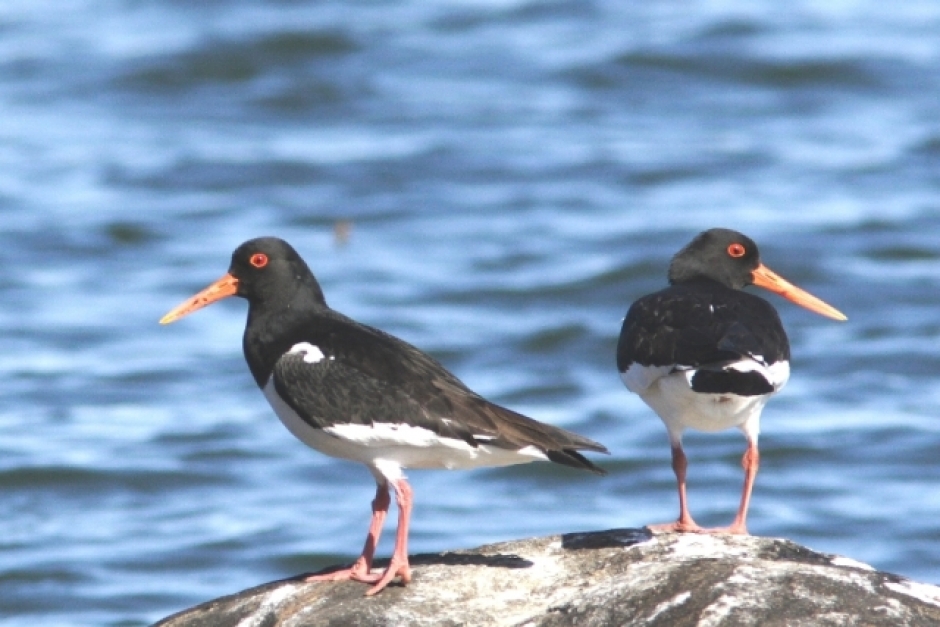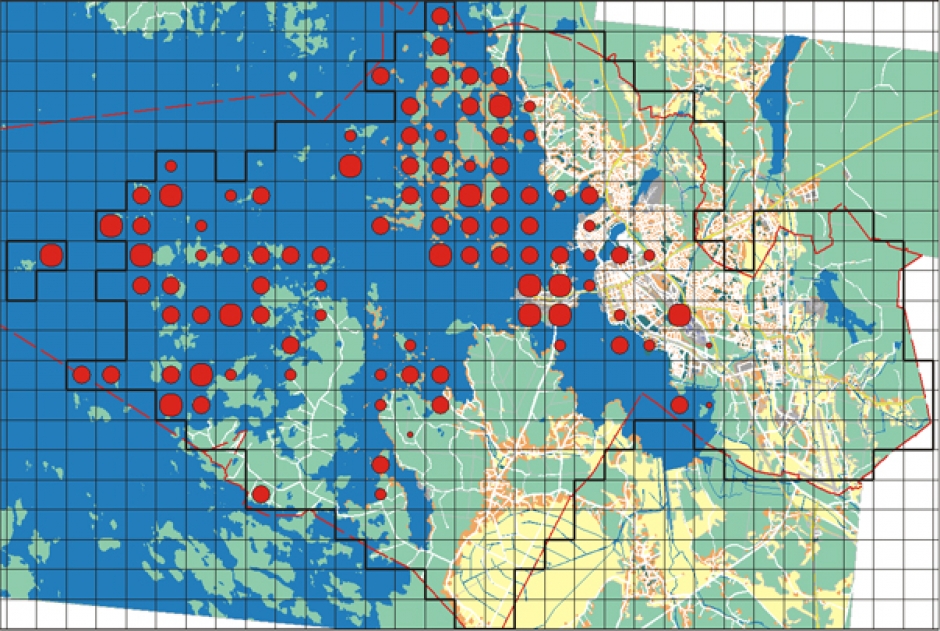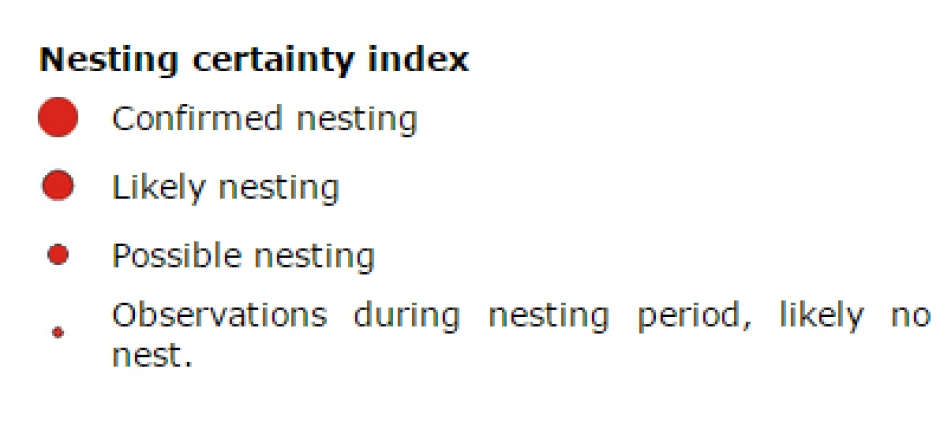Eurasian Oystercatcher
Haematopus ostralegus

General information. The Eurasian oystercatcher is a common wader across the whole of Finland’s coastal area, including both the inner and the outer archipelago. The nesting population has been growing since the end of the 20th century, spreading in some places to the great lakes of central and southern parts of the country. The census of nesting birds in Torgrund indicates an increase in the nesting population in Vaasa.
The Eurasian oystercatcher is easily recognized by its black and white plumage, and long orange-red bill. The species tends to be noisy around their nesting site during breeding season and brooding. This makes them easy to observe during the survey.
- Length about 45 cm
- Nests on the ground in pebble fields or sand
- Migratory species, wintering along the coast of Western Europe
- Feeds on insects, conches, worms and mussels
Habitat. The Eurasian oystercatcher nests on large islands or small bird inhabited skerries. This species prefers open sandy or rocky beaches and waterfront meadows. It is, however, absent among the nesting birds on the steepest, rocky beaches. Several pairs have been observed nesting on industrial and disturbed soil areas along the coast, such as Onkilahti and Vaskiluoto.
Distribution in Vaasa. The Eurasian oystercatcher was observed in a total of 90 survey blocks and belongs to the list of characteristic bird species of the archipelago. Within the city, it has also been found nesting inland, by the Strömberg Park industrial area, on the roofs of industrial buildings. Under typical circumstances, the Eurasian oystercatcher nests in the pebble fields of the archipelago.


